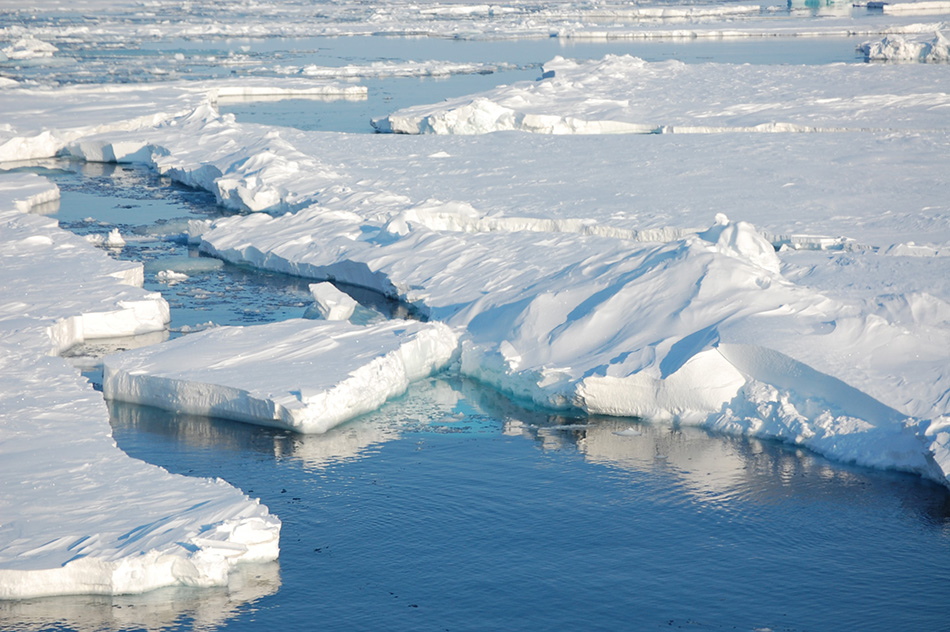Arctic Ocean likely to become ice-free in the summer for first time before 2050
Analysis of international modeling data shows improvement in simulating polar ice
Apr 23, 2020 - by Staff
Apr 23, 2020 - by Staff

The Arctic Ocean is likely to be ice free in the summer for the first time before 2050. (Image: Dirk Notz, University of Hamburg)
The Arctic Ocean is likely to have its first ice-free summer before 2050, according to an analysis of simulations from more than 40 different climate models. How frequently the sea ice vanishes in the summer depends on the rate of greenhouse gas emissions in the future.
The new study, published in Geophysical Research Letters, was led by the University of Hamburg and involved scientists from 21 research institutions, including the National Center for Atmospheric Research (NCAR).
For the study, the research team analyzed simulations completed by modeling groups around the world using identical protocols. The simulations cover a wide range of future emissions possibilities, including a scenario with high emissions and low climate protections as well as its reverse – a scenario with high climate protection and aggressive cuts to emissions – and several others that fell in between.
As expected, Arctic sea ice disappeared quickly in the summer under the high-emissions scenario. However, the new study finds that summer Arctic sea ice was significantly impacted even if emissions are drastically reduced.
"If we reduce global emissions rapidly and substantially, and thus keep global warming below 2 degrees (Celsius) relative to preindustrial levels, Arctic sea ice will nevertheless likely disappear occasionally in summer even before 2050. This really surprised us," said Dirk Notz, who leads the sea-ice research group at University of Hamburg and coordinated the study.
The research was based on work supported by modeling centers around the world, including NCAR, which is sponsored by the National Science Foundation.
In support of assessment reports released by the Intergovernmental Panel on Climate Change (IPCC), modeling groups around the world agree to run standardized scenarios using their individual models. The results from the Climate Model Intercomparison Project (CMIP) give scientists a more in-depth understanding of how the climate may change, including what we can be most confident of (where the models agree) and what we don’t yet know (where the models disagree).
By comparing the CMIP results of the past with observations, scientists can also better understand which phenomena the models are good at capturing and which are not well reproduced. For the new study, the scientists examined how well the simulations from the latest intercomparison project, CMIP6, did at simulating sea ice area and volume in the past as the global concentration of carbon dioxide in the atmosphere has risen.
“We found that CMIP6 did a better overall job than previous CMIP efforts in both hemispheres in terms of sea ice, though there are still challenges remaining,” said NCAR scientist David Bailey, who is a co-author of the new paper as well as a separate study in the same issue, looking specifically at Antarctic sea ice in the CMIP6 simulations.
CMIP is an initiative of the World Climate Research Programme.
The research team also found that the majority of CMIP6 simulations have an ice-free summer in the Arctic before 2050 in all scenarios. Though how often the Arctic will lose its sea-ice cover in the future depends on future greenhouse gas emissions. If emissions are reduced rapidly, ice-free years only occur occasionally. With higher emissions, the Arctic Ocean becomes ice free in most years, according to the new study.